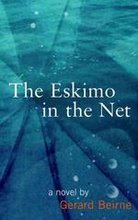The Isomorphic Writer and The French Lieutenant's Woman
"Analogy-hungry perceiving machine?"
"That I am." Hofs and his incessant smile.
"You like your job, don't you, Hofs?"
"Don't you like yours?"
"Writers are funny that way."
"Anyway, Dead Beat, the point is that "conscious being" need not be human or even organic. Actually I would carry the abstraction of the term "reference" even further, as follows. The mapping of systems and roles that establishes reference need not actually be perceived by any such being: it suffices that the mapping exist and simply be perceptible to such a being were it to chance by."
"I chanced by Metamagical Themas: Questing for the Essence of Mind and Pattern in my local library."
"I am glad you did, Dead Beat."
"So am I."
"The French Lieutenant's Woman."
"Say what, Hofs?"
"The French Lieutenant's Woman."
"John Fowles."
"The very same. Let's consider the film version, however: It consists of interlaced vignettes from two concurrently developing stories both of which involve complex romances: one in the past, one in the present. The fact that there are two romances already suggests that a mapping is called for. But much more is suggested than that. There are structural similarities between the two romances: each of them has triangular qualities, and in both stories only one leg of the triangle is focused upon. Moreover, the same two actors play the same two lovers in both romances, so that you see them in alternating contexts and with alternating personality traits. The reason for this "coincidence" is that the contemporary story concerns the making of a film of the past story.
As the two stories unfold in parallel, a number of coincidences arise that suggest even more strongly that a mapping should be made. But it is left to the viewer to carry this mapping out; it is never called for explicitly. What is pleasant in this game is the fluidity left to the viewer: there is much room for artistic licence in seeing connections, or suspecting or even inventing them.
Indirect reference of the artistic type is much less precise than indirect reference of the formal type. The latter arises when two formal structures are isomorphic - that is, they have strictly analogous internal structures, so that there is a rigorous one-to-one mapping between the roles in the one and the roles in the other. In such a case3 the existence of genuine reference becomes as clear to us as the case of someone talking about their mirror image; we take it as immediate, pure self-reference, without even noticing the indirectness, the translational steps mediated by the isomorphism."
"I am writing a novel set in the past and present."
"I know you are Dead Beat."
"Each consists of a triangular romance."
"Of course it does."
"The same main character, but two different characters in the other parts of the triangle."
"Tell me something I don't know."
"Are you giving me advice here Hof?"
"Would you tell me how to do my job?"
"I guess not."
Hof shrugs.
"It's just that it sounds like you know more about the form of writing than I do. Even after all these years."
"Mapping, analogy."
"We're in the same business."
"I guess we are."
"It's fun isn't it?"
"Isn't this where we came in, Dead Beat?"
"Isomorphism."
"You're learning my boy. We'll make a writer of you yet!"











No comments:
Post a Comment